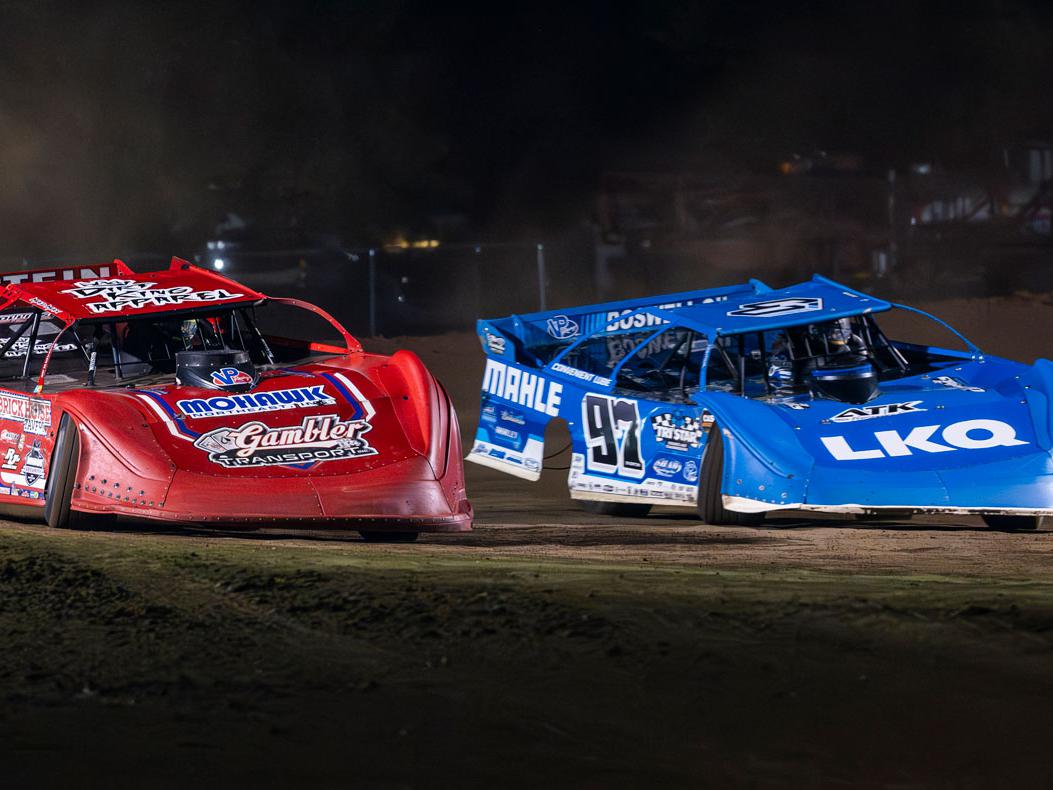Tracking Safety
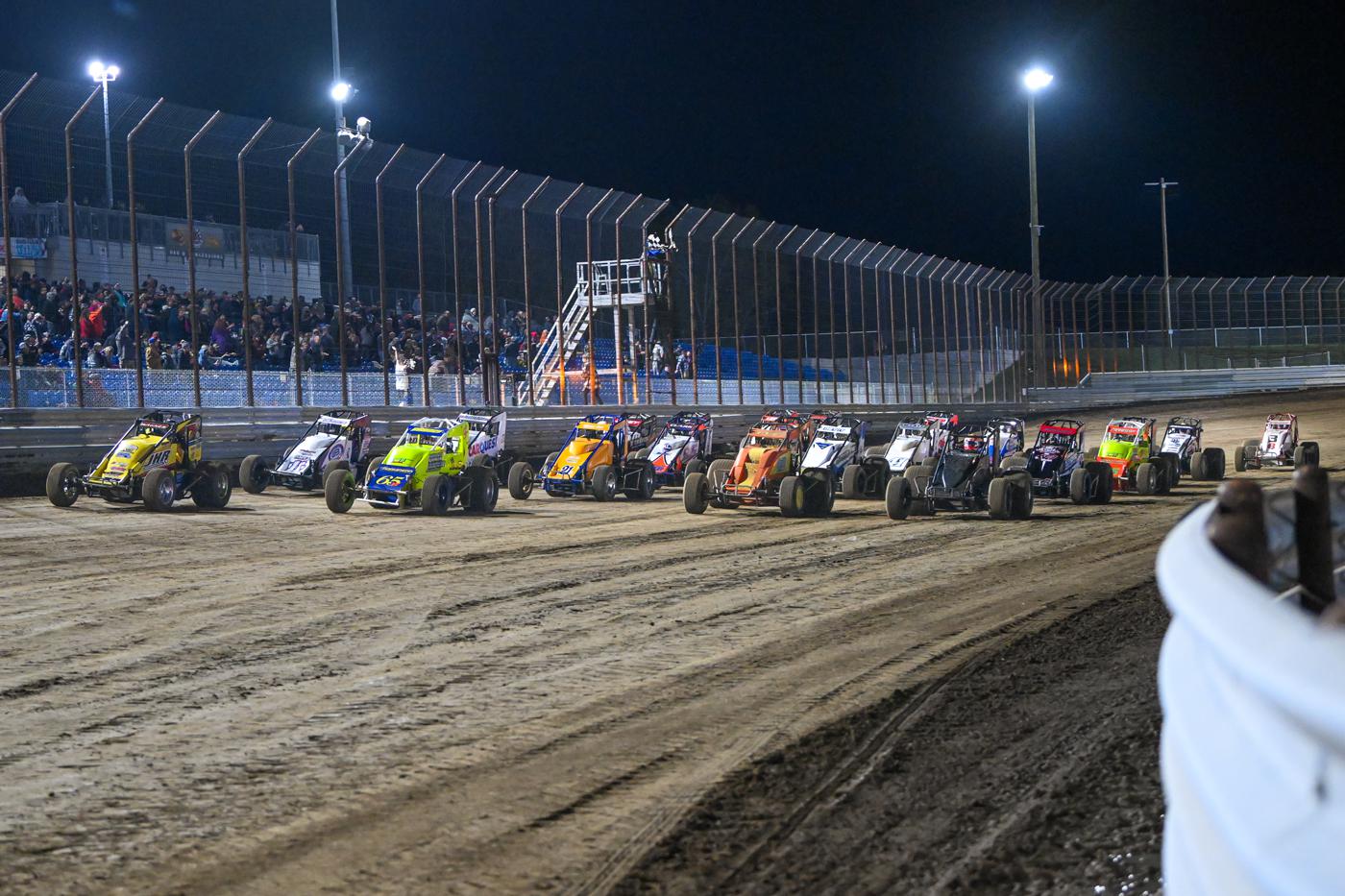
Upgrading a race track to a safer facility takes commitment, planning, and no small amount of ingenuity.
As anyone involved in racing knows, safety is a constantly moving target. There is never a time when a track owner or promoter can sit back, relax, and put safety issues on the back burner. Cars get faster, new technology is introduced, new racing series are launched, and older facilities come due for upgrades. Every year seems to bring that one spectacular crash splashed across the internet that reveals a safety vulnerability nobody had considered previously.
Safety improvements are generally handled in one of two ways—hardware and training. For race promoters, that can mean investments in fencing, barriers, fire trucks, ambulances, and more. It also means specialized training and regular drills to ensure everyone knows what to do when bad things happen.
We spoke with a sampling of track operators for a paddock-level view of how they stay on top of safety concerns. Our sources had differing needs and approached the problem from different angles, but all had made recent safety updates aimed at protecting drivers, trackside workers, and fans.
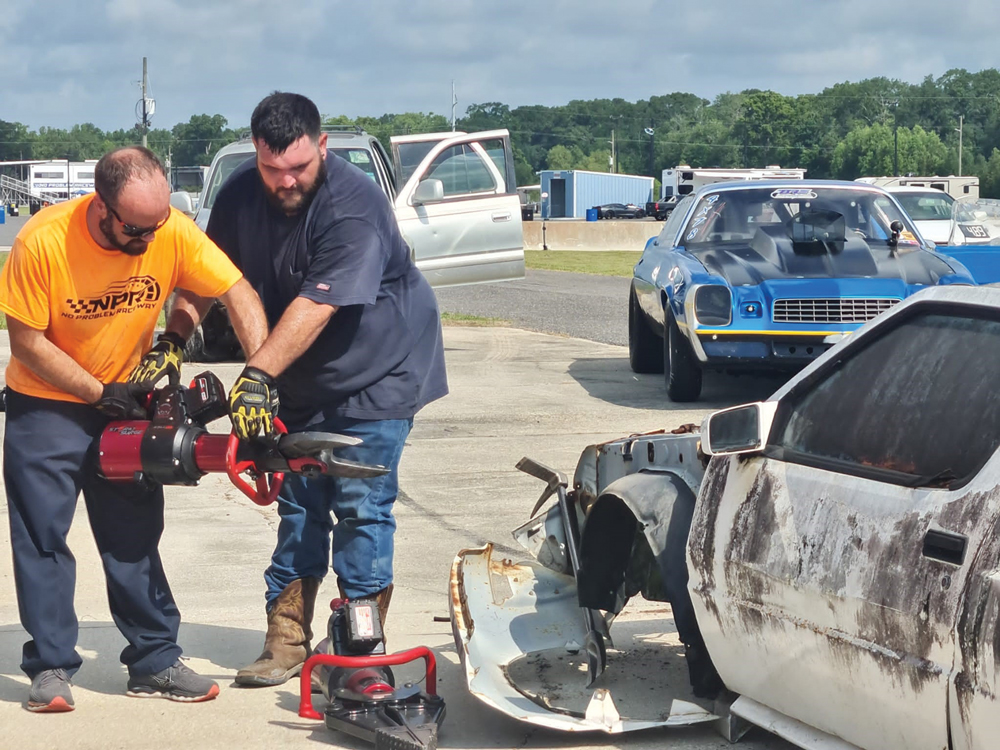
Of course, many track owners and promoters have a racing background themselves, and safety isn’t just a technical issue, it’s deeply personal. “We take safety very, very seriously,” said Nelson Hoyos of No Problem Raceway, a drag strip and road course facility in Belle Rose, Louisiana. “I raced in the NHRA programs for many years and had the mishap of crashing three times. Let me tell you, I was very glad that the Safety Safari was there, and everybody had all the equipment and everything. Luckily, I never got hurt, it was never really bad, but it could have been. So we’ve taken the attitude here that safety is number one, and everything else comes secondary.”
“I was racing before I wound up getting a drag strip, and I still race,” said Terris Hicks of Capitol Raceway, a drag strip and drifting track in Crofton, Maryland. “I know you don’t have a whole bunch of time in those cars when something happens.”
Hammers and Nails
A major part of updating safety systems at a race track involves straightforward hardware like fencing, barriers, and fire suppression equipment. But many tracks in the US and Canada have decades of history behind them. Older tracks being put back into commission frequently have to take a top-to-bottom approach. What was good enough in 1984 doesn’t make the grade in 2024.
Millstream Speedway in Findlay, Ohio, is a 4/10-mile and 1/4-mile oval dirt track that first opened in 1952. It had sat unused for many years until purchased in 2023 by MS Properties and Matt and Beth Cogley. They reopened the track in June 2024.
“The track had sat idle for eight years, which didn’t help matters any,” said Beth Cogley. “All the bleachers had to be replaced. The pit-side bleachers boards were all completely bad, so we completely replaced the boards. We had to put in heel kicks on all bleachers. We had to put in other fall protection measures for both sides, grandstand and pitside. Also, for fan safety, particularly in the curves, and this is still ongoing, we are placing a chicken-wire fence on the fan side of the regular catch fence to prevent rocks and clods of dirt from flying up into the stands.
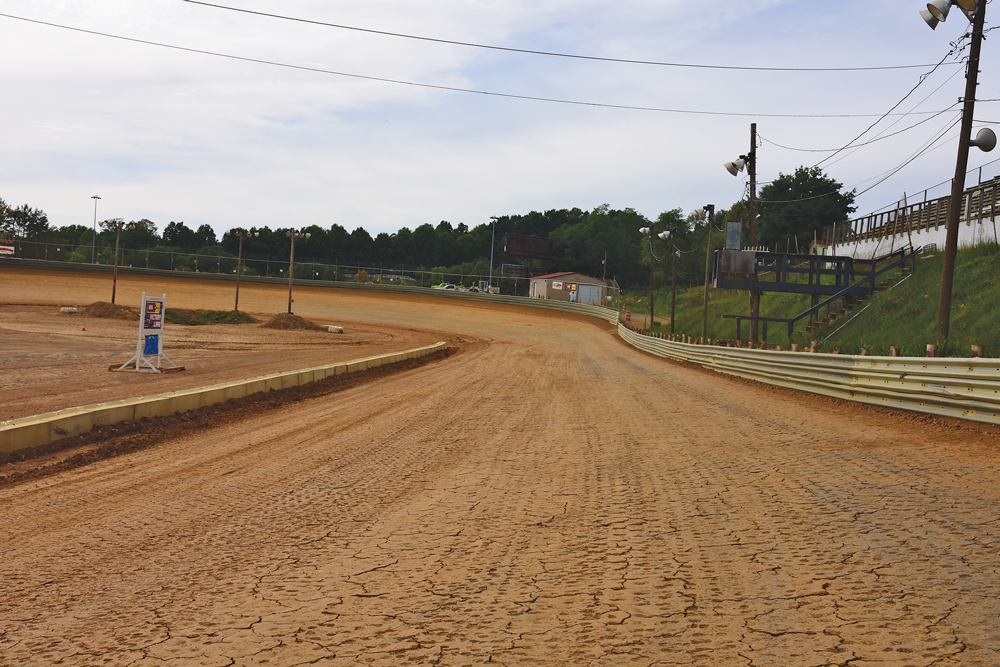
“For the driver’s side, we completely replaced the surface. That was part safety and part just necessary,” Cogley continued. “We’re not going to a flagman-less system, but we have definitely upgraded the caution light system to the full LEDs with the remote controls that are available to both the flagman and up in the booth. We’ve put more around the track. There are now eight instead of just four. And with the brightness of those, the drivers have commented that they are much, much easier to see.”
Beckley Motor Speedway, a 3/8-mile dirt track in Mount Hope, West Virginia, also needed a substantial refresh after new ownership took over in 2022. “When the new owner Randy Kinder took over, he put a new catch fence in. That was before he ever opened,” said Beckley’s Joseph Rush. “In turns one and two it’s basically a straight opening to the pits from the outside of one and two, so the catch fence was added there. And then the guardrails that we had were old and rickety, so we added brand new guardrails before this season.”
Every track has different needs, with different safety vulnerabilities, which can sometimes result in tracks examining the same safety issue and coming to different conclusions. Such was the case with Millstream and Beckley Speedways regarding an inside wall for their oval tracks.
“Our track had an inside wall that made it difficult for cars to get off the track if they were having problems. One of the things we did to the great glee of many drivers—and our insurance company for that matter—was remove that inside wall,” Cogley said.
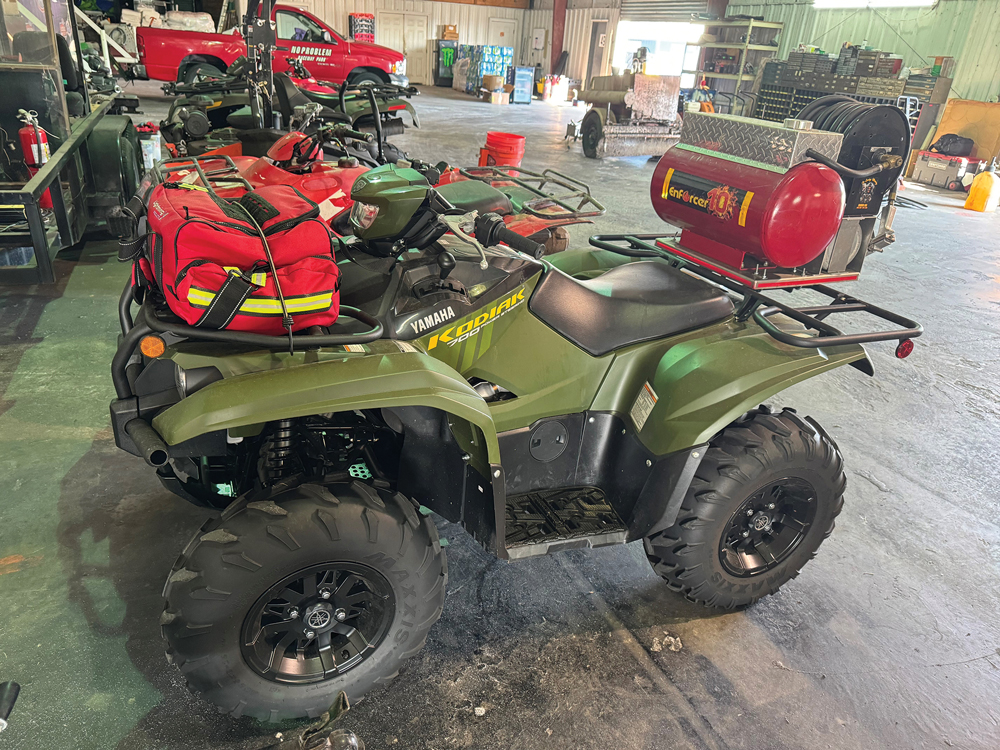
“There have been lots of drivers over the years who had hit that inside wall or bounced off the inside and hit the outside or hit other cars. From what I can tell, the fans are not as thrilled about that wall going away, but for a safety feature, the drivers are certainly glad it’s gone,” she added.
Beckley Motor Speedway took the opposite approach, adding an inside wall as a safety feature. “We’ve put in infield barrier walls,” Rush said. “That’s less for driver protection and more for infield worker protection because the infield had been totally open. That was something added to keep the infield workers safer and give them some protection down there.”
For No Problem Raceway, a heavy investment in safety gear gives the track a measure of independence from outside services. “We have our own ALS [Advanced Life Support] ambulance. I have a doctor who has underwritten our program so all my medics are ALS medics in-house. They are all state certified,” Hoyos said. “We have of course all the equipment and a fully equipped ambulance. We have two fire trucks. One is a small attack truck, and we have one large 35-foot multi-use vehicle that is a huge fire truck. We have ATVs with Enforcer systems on them, which are also mobile fire suppression systems. I have two sets of Jaws of Life that we own. I have a Safety Safari-type truck that has fire extinguishers and track cleanup and all the other things. All of our safety units have the safety clothes and the helmets and everything else. We’re pretty fully equipped. We want to chart our own course.”
At Capitol Raceway, Hicks reported that listening to racers’ concerns helped him upgrade the track’s safety features. “We have fire extinguishers all the way down both sides of the drag strip,” Hicks said. “What we’re doing now is putting stakes in the ground along the wall that say ‘Fire Extinguisher’ so that they don’t have to run to the wall and look around. They can look straight ahead and see the sign that says, ‘Fire Extinguisher.’
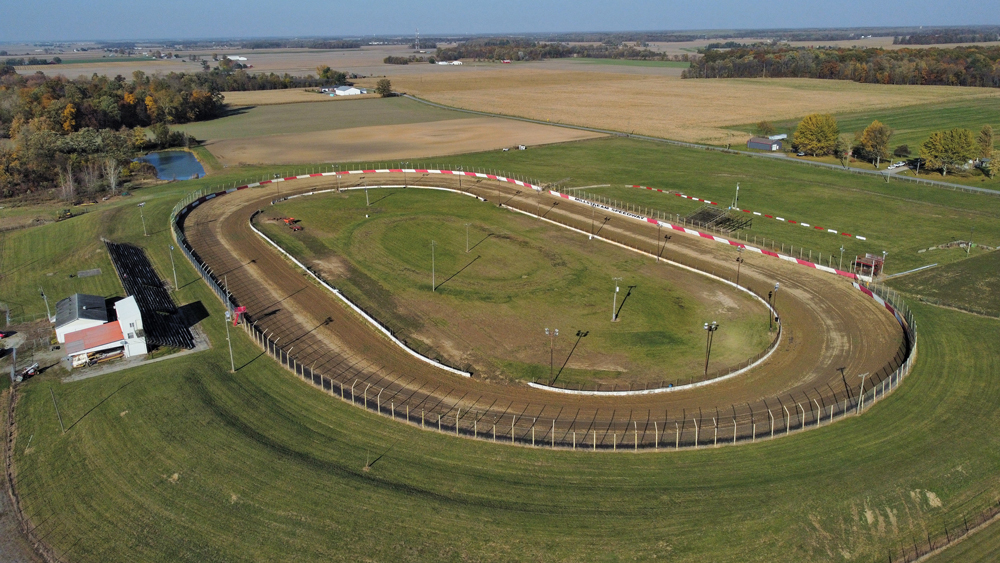

“Most of the time when a racer has an incident, they panic. They’re running around their car trying to figure out how to put that fire out before you even get to them. If you get there in two minutes, it feels like two hours to them,” Hicks continued.
“One guy blew a transmission line, and his car didn’t catch fire, but it flamed up and went back out. He said, ‘I know y’all have fire extinguishers up top, but there are none down at the bottom.’ People give advice, and we listen to them to try to better things.”
Drill and Train
All the safety gear in the world is of little use if track personnel aren’t trained to use it. Our sources reported regular drills and training for staff. “We do it once a month,” Hoyos said. “We get the crew together and we’ve brought in several cars that we could cut up and use the Jaws of Life. We’ve had several broken-down race cars that we have been able to cut the cages out of.
“We have had AirMed [an air ambulance] here twice this year, going through their processes and what they do and what they need. We have our own set of lights that we put out for AirMed, so everyone knows exactly what they need to do. The gals upstairs in the control room have all the phone numbers to the hospitals, sheriff’s department, AirMed, to anybody and everybody that we need to make sure that we get in contact with those folks. And then luckily for me, my fire chief is the fire chief to the local community.”
That training and high standards pay off on race day. “Ninety percent of the people who we employ for the weekend races have some sort of medical training. Even my water box guys are medical, my ready line are medical, my staging people are medical,” Hoyos said. “We can get to wherever we need to go immediately. During big events when we have a large group of people in the grandstands, we have two guys on four-wheelers and a little ATV that are in charge of anything and everything happening in the grandstand area.
“I have a fairly easy entrance and exit to both of my grandstands,” he continued. “One of them is fully handicap available, the other one is not. Egress and ingress there is not an issue. We have two people on each side of the grandstands who are just roaming the grandstands to make sure that everybody is in good shape. And then I have another six medical people in the area in case something does go wrong, we can attend to it immediately.”
Capitol Raceway also charted an independent course after an experience with an outside company that overlooked a car that went down the track and caught fire, and track staff had to respond, Hicks said. “Instead of having an outside company, we have our own EMTs who are up-to-date licensed, and we have our own ambulance and fire truck,” he said. The track has defibrillators, oxygen, and its own EMT bags so employees can respond as quickly as possible.
The staff also performs regular safety drills. “We designed a car that doesn’t have any windows in it, no nothing, no motor or anything. We take that car and flip it upside down on the track and have our rescue team go out there and unbuckle somebody and get them out of the car. We see how much time it takes for that to happen.”
Safety is always front and center for Capitol Raceway, Hicks said, since so many of the track’s customers are street-and-strip racers who aren’t always regulars at a track. “We have rental helmets. If you don’t have a helmet, you can come in and rent a helmet,” he said. “It’s like a wild horse. You’re trying to tame them when they come in off the street.”
Even for experienced first responders, the evolution in motorsports safety procedures has been eye-opening. “We are extremely lucky that the three volunteer fire departments that surround our track are very interested and proactive in motorsports safety training,” Cogley said. “We’re also very near Bowling Green, which has the big tractor pulls every year, so there’s an element of that as well. All three of the fire departments in our area have been trained in multiple ways.
“My husband and I were both volunteer firefighters years ago and had taken the motorsports safety training for the Bowling Green tractor pulls,” Cogley added. “It’s neat to see how that training has been upgraded since we took it.”
SOURCES
Beckley Motor Speedway
beckleymotorspeedway.com
Capitol Raceway
thecapitolraceway.com
Millstream Speedway
millstreamspeedway.net
No Problem Raceway
racenpr.com
 MEMBERSHIP LOGIN
MEMBERSHIP LOGIN JOIN PRI
JOIN PRI

